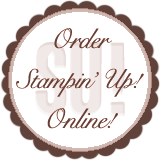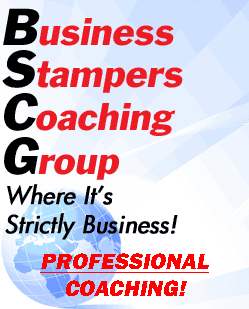Good Morning! I have recently started getting a several email questions about crafting, techniques, stamping, Stampin' Up and many other issues revolving around my business. I am going to start adding them here so that everyone can get the answers (and hopefully come up with more). The questions can be about anything (a technique, a tool, ideas, business opportunities, classes...etc.). If you have questions please email them to tamistamps@gmail.com and I will try to get them loaded and answered as soon as I can. If you would prefer that your name not be listed on the question (I only do first name and last initial) you can just add that to your email and I will NOT put your name on it at all. I value you and your questions :).
The first question is from Kori H: "I have seen so many things about becoming a Stampin' Up Demonstrator in February or March because of Sale-a-bration. Is this really the best time to sign up?"
Answer: Although I love Stampin' Up and would encourage people to sign up any time they are ready--this is a WONDERFUL time to sign up. Not only is the starter kit 15% off but you also get a free stamp set of ANY price (want one of those pricey but needed alphabet sets--YOU CAN GET IT FREE!!! That means you are saving around $100 on top of the huge savings of the starter kit. There are other things for demonstrators right now that are making being a demonstrator even better. As a special thank you to demonstrators Stampin' Up! is offering 20% off all pre-ordered stamp sets. We are about to pre-order from the Occasions Mini. These are just some of the great things about becoming a demonstrator right now.
For those of you who are on the fence like Kori--There is a lot that Stampin' Up! does to help you as a demonstrator (tips, samples, how-to videos...the list goes on), but I will help you as well. Along with my upline and other demos in the Wichita Falls area, we have a monthly Demonstrator meeting to discuss issues and ideas for being a demonstrator. If you would like to check out one of the demonstrator meetings please call or email me. I would love to have you as one of my guests for the event.
If you have a question you would like answered--email me at tamistamps@gmail.com
Thursday, February 26, 2009
Sunday, February 22, 2009
People & Portrait Photography Quick Tips
People & Portrait Photography Quick Tips--from NationalGeographic.com
If you use objects other than your main subject in the foreground, be careful of placement. You don't want to obscure or detract from your subject. Every time you hold your camera to your eye, look for leading lines, foreground elements, frames—anything you can use to lend dynamism to your image. Photographs are two dimensional but it helps if they look and feel three dimensional. Don't just stand there—sit, squat, lie down. The angle from which you make a photograph can make a dramatic difference. When using an electronic flash indoors, move your subject away from walls to prevent harsh shadows. A piece of very light orange gel over the face of your electronic flash can warm up the light and give it a more pleasing cast.
When you first arrive at a new location, make note of any features that strike you. Try to find ways to incorporate them into your composition. Be careful if you are using a wide-angle lens to photograph a group. The people at the edges may get distorted. If kids want to look through the camera, let them. They will be more relaxed and cooperative. Just watch out for dirty fingers on the lens. Anticipate kids' behavior. If they are playing tag, set up near the base, compose your image, and wait for them to come running in.
If you use objects other than your main subject in the foreground, be careful of placement. You don't want to obscure or detract from your subject. Every time you hold your camera to your eye, look for leading lines, foreground elements, frames—anything you can use to lend dynamism to your image. Photographs are two dimensional but it helps if they look and feel three dimensional. Don't just stand there—sit, squat, lie down. The angle from which you make a photograph can make a dramatic difference. When using an electronic flash indoors, move your subject away from walls to prevent harsh shadows. A piece of very light orange gel over the face of your electronic flash can warm up the light and give it a more pleasing cast.
When you first arrive at a new location, make note of any features that strike you. Try to find ways to incorporate them into your composition. Be careful if you are using a wide-angle lens to photograph a group. The people at the edges may get distorted. If kids want to look through the camera, let them. They will be more relaxed and cooperative. Just watch out for dirty fingers on the lens. Anticipate kids' behavior. If they are playing tag, set up near the base, compose your image, and wait for them to come running in.
Labels:
tips and tricks
Tuesday, February 17, 2009
The History of Greeting Cards
The History of Greeting Cards(from the Postcard and Greeting Card Museum - www.emotionscards.com)
Sending greeting cards to friends and family is a tradition that goes back about 200 years. They were mostly sent by the elite and wealthy in the early to mid 1800's. Most of the early greeting cards were hand delivered and many were quite expensive, but they soon gained mass popularity with the introduction of the world's first postage stamp issued in 1840 and a few ambitious printer's and manufacturer's perfecting printing methods, hiring artists and designed both elaborate expensive cards as well as simple affordable ones by the 1850's.As you visit our galleries you will see that cards of the past were fine pieces of art. Manufacturer's used quality artists and many of the large manufacturer's held "art" competitions to generate interest and to get new ideas for cards. Some of these competitions awarded as much as $1,000.00 to the winner!The oldest known greeting card in existence is a Valentine made in the 1400's and is in the British Museum. New Year's cards can be dated back to this period as well, but the New Year greeting didn't gain popularity until the late 1700's. The Valentine and Christmas Card were the most popular cards, with Valentine's offering us the most "mechanical", "pop-up" and filigree cards, followed by Christmas, St. Patrick's Day, Easter, Halloween and Thanksgiving. Cards gained their highest popularity in the late 1800's and early 1900's offering us cards with some of the most unusual art. The Victorian age give us the most prolific cards. Valentine greetings were popular as far back as the Middle Ages, when lovers said or sang their Valentines. Written Valentines began to appear after 1400. Paper Valentines were exchanged in Europe where they were given in place of Valentine gifts. Handmade paper Valentines were especially popular in England. In the mid to early 1800's, Valentines began to be assembled in factories. Early manufactured Valentines were black and white pictures painted by workers in a factory. Esther Howland (see below) known as the Mother of the Valentine made fancy Valentines with real lace, ribbons and colorful pictures known as "scrap". She introduced the Paper Lace Valentine in the mid 1800's. By the end of the 1800's, Valentines were being made entirely by machine.Christmas cards were introduced and popularized by John Calcott Horsley, the artist of what is known as the world's first Christmas Card and Louis Prang, known as the Father of the American Christmas Card.The rest is History. With the exchange of New Year's, Valentine's, Easter, St. Patrick's Day, Halloween, Thanksgiving, Christmas and Birthday Cards, just to name a few, there is probably no occasion that doesn't have its own greeting card!
Sending greeting cards to friends and family is a tradition that goes back about 200 years. They were mostly sent by the elite and wealthy in the early to mid 1800's. Most of the early greeting cards were hand delivered and many were quite expensive, but they soon gained mass popularity with the introduction of the world's first postage stamp issued in 1840 and a few ambitious printer's and manufacturer's perfecting printing methods, hiring artists and designed both elaborate expensive cards as well as simple affordable ones by the 1850's.As you visit our galleries you will see that cards of the past were fine pieces of art. Manufacturer's used quality artists and many of the large manufacturer's held "art" competitions to generate interest and to get new ideas for cards. Some of these competitions awarded as much as $1,000.00 to the winner!The oldest known greeting card in existence is a Valentine made in the 1400's and is in the British Museum. New Year's cards can be dated back to this period as well, but the New Year greeting didn't gain popularity until the late 1700's. The Valentine and Christmas Card were the most popular cards, with Valentine's offering us the most "mechanical", "pop-up" and filigree cards, followed by Christmas, St. Patrick's Day, Easter, Halloween and Thanksgiving. Cards gained their highest popularity in the late 1800's and early 1900's offering us cards with some of the most unusual art. The Victorian age give us the most prolific cards. Valentine greetings were popular as far back as the Middle Ages, when lovers said or sang their Valentines. Written Valentines began to appear after 1400. Paper Valentines were exchanged in Europe where they were given in place of Valentine gifts. Handmade paper Valentines were especially popular in England. In the mid to early 1800's, Valentines began to be assembled in factories. Early manufactured Valentines were black and white pictures painted by workers in a factory. Esther Howland (see below) known as the Mother of the Valentine made fancy Valentines with real lace, ribbons and colorful pictures known as "scrap". She introduced the Paper Lace Valentine in the mid 1800's. By the end of the 1800's, Valentines were being made entirely by machine.Christmas cards were introduced and popularized by John Calcott Horsley, the artist of what is known as the world's first Christmas Card and Louis Prang, known as the Father of the American Christmas Card.The rest is History. With the exchange of New Year's, Valentine's, Easter, St. Patrick's Day, Halloween, Thanksgiving, Christmas and Birthday Cards, just to name a few, there is probably no occasion that doesn't have its own greeting card!
Tuesday, February 10, 2009
Check out the Big Shot Video!!!
As I've mentioned to most of you, Stampin' Up! has started posting videos to the demonstrator's website. These videos are available to you as a customer! The video they just posted is all about the Big Shot. You know how much I love the Big Shot now you can see why! Check it out today.
http://tamiimlay.stampinup.net/
http://tamiimlay.stampinup.net/
Labels:
big shot,
tips and tricks
Monday, February 9, 2009
Successful Catalog Extravaganza!!!!
If you didn't make the open house you missed a good time. I had 2 projects for everyone to make and lots of door prizes (everyone got something). As a special gift everyone who came got a free Idea Book and Catalog (a $10 value). I still have a few left--contact me if you are interested! The thank you card (above) uses the New Sweet Stem stamp set along with the coordinating Raspberry Tart designer series paper! The Embrace Life scrapbook page (below)uses the Sunshine Garden Simply Scrappin' Kit! I still have a few project kits available if you would like to make them! I want to thank everyone who came! You really made it a great day. I have already placed the order so in about 2 weeks everyone will get their goodies.
Subscribe to:
Comments (Atom)









 a href="http://www.stampinup.com/us/enu/11120_11851.asp">
a href="http://www.stampinup.com/us/enu/11120_11851.asp">










